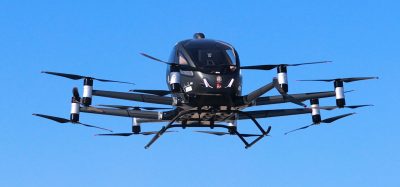Beacons – coming to an airport near you?
- Like
- Digg
- Del
- Tumblr
- VKontakte
- Buffer
- Love This
- Odnoklassniki
- Meneame
- Blogger
- Amazon
- Yahoo Mail
- Gmail
- AOL
- Newsvine
- HackerNews
- Evernote
- MySpace
- Mail.ru
- Viadeo
- Line
- Comments
- Yummly
- SMS
- Viber
- Telegram
- Subscribe
- Skype
- Facebook Messenger
- Kakao
- LiveJournal
- Yammer
- Edgar
- Fintel
- Mix
- Instapaper
- Copy Link
Posted: 11 March 2014 | SITA | No comments yet
Beacon technology has been hailed as a game-changer in retail…


Beacon technology has been hailed as a game-changer in retail. It uses Bluetooth to trigger the display of information on phones and tablets that is relevant to the specific location and context of the user. But will Beacons be used at the world’s airports? SITA Lab, the technology research team of the air transport industry’s IT provider SITA, has conducted the earliest trials of beacon technology at airports and has today issued its findings in its paper “Connecting to your passenger – are beacons the breakthrough?”
Beacon PRConnecting and communicating efficiently with passengers throughout their journey is a widely-held goal in the air transport industry and SITA Lab’s research has investigated the potential of using beacon technology in today’s airports. The benefits being touted for the technology, such as low cost and wide range, have a strong appeal for anyone wanting to connect directly with customers. But SITA Lab investigated if the technology works as advertized in the real world. Trials with a leading international airline and airport have produced results which are both promising and cautionary.
SITA’S Chief Technology Officer, and the head of SITA Lab, Jim Peters, said: “The relatively low cost of beacons makes them an attractive option for airports, but we need to be careful of adopting a gold rush approach to deploying them. It is clear from our initial research that beacons should be treated as a common-use piece of infrastructure. Airports serve multiple airlines, and airlines travel to multiple airports. It is a very complex network – too complex for everyone to manage their own deployments. It will need careful management.
“Airports also need to carefully manage their radio space as beacons, which are radio-emitting devices, are deployed. They will need to have clear visibility of where, and how, the beacons are being set up to avoid disruption to each other’s signals and existing Wi-Fi infrastructure.”
SITA Lab’s research has highlighted that at airports, where an airline does not have dedicated gates or other infrastructure, a common-use approach to beacon technology makes sense. Shared beacons, that different airlines could associate their own mobile apps to as and when required, would be far more efficient and effective than each airline managing a set of beacons at each airport.
It is already a model used effectively for other shared services at the world’s airports, such as check-in, bag drop and gate infrastructure. And now for beacons, SITA is taking up the challenge for the industry in its role as the community provider.
Peters announced: “SITA Lab is currently building an industry registry for all beacons. The goal is that any airline will have a single point of contact to go to use any beacon deployed by airports around the world. We are already working with some early adopters but are looking for other airports, airlines and app developers who are interested in leveraging the potential of beacons in the air transport industry to join the project.”
Early indications, based on work by SITA Lab, suggest airports could become a prime user of the technology. However, unless an industry registry is embraced, the risk is that deployments of beacons will be piecemeal and proprietary, limiting the potential of the technology.
Those interested in working with SITA Lab can contact Lead Engineer Kevin O’Sullivan and get more information here.


















